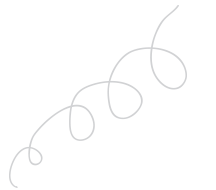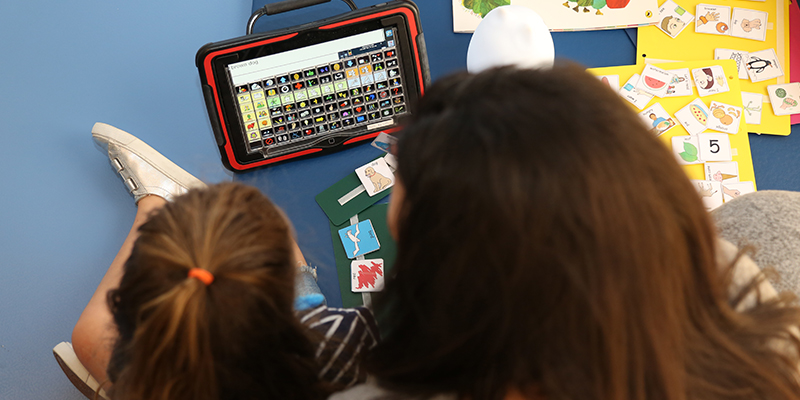
Taking notes in a book, using gestures to communicate, or pointing to pictures to express ourselves are forms of Augmentative and Alternative Communication (AAC).
AAC includes all forms of communication—other than oral speech—that are used to express thoughts, needs, wants, and ideas. It features the use of customized methods and devices to supplement a person’s ability to communicate, either to “augment” current speech production or as an “alternative” to speech. Therefore, AAC is recommended for children with moderate to severe speech and language delays or disorders.
Types of Augmentative and Alternative Communication (AAC):
There are two types of AAC, unaided and aided:
- An unaided system is the use of natural tools, like gestures, body language, facial expression, and signs.
- An aided system is the use of a tool or a device to be able to communicate. It is divided into two categories:
- Low-tech: pictures, communication boards, gestures, and switches.
- High-tech: speech-generating devices and eye gaze.
| Category | Device | Image |
|---|---|---|
| Low-tech | Communication board | 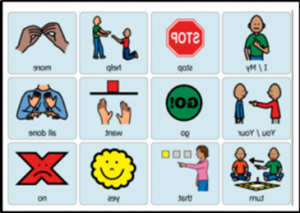 |
| Low-tech | Switches |  |
| Low-tech | Gestures | 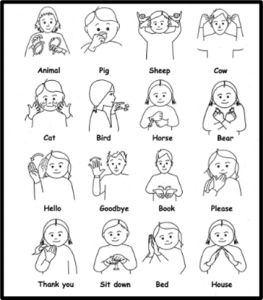 |
| High-tech | Speech generating devices | 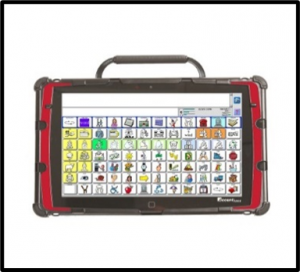 |
| High-tech | Eye gaze | 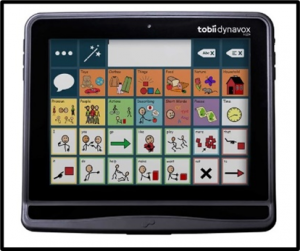 |
Commonly asked questions:
Parents usually ask the following questions when AAC is introduced to their children:
“Will AAC stop my child from developing natural speech?”
Based on many studies and analyses, we know that AAC doesn’t hinder or delay natural speech development. On the contrary, it may enhance and support speech development. The use of gestures, pictures, and assistive technology boards will improve speech and language.
According to Millar et al (2006), “AAC intervention has significant benefits in the development of communication competencies and language skills; the present best evidence analysis provides data that suggest AAC interventions can also have positive benefits for natural speech production.”
This means AAC doesn’t only provide the child with tools to communicate and express him or herself, but it will also help improve speech, language, and many other developmental aspects like cognitive skills, literacy, social participation, and access to education.
“Couldn’t we try to work more on language and natural speech development before introducing AAC?”
While using AAC with a child, it is important to note that it won’t halt speech development. On the contrary, it will support natural language and speech growth.
To address such fears, these are three key points to be aware of while implementing AAC with your child:
- Even if your child is using AAC, he or she will keep on developing speech. AAC will be an augmentative or alternative tool to support and enhance his or her abilities. Children will always use speech if they can, as it is the most natural way to communicate.
- Using AAC will provide your child with different methods to use when communicating. Therefore, your child will always have a way to communicate with all people in all situations.
- It is highly recommended to combine AAC interventions with speech therapy sessions to provide effective means of communication, proper use of AAC tools, and adequate speech and language development.
“What is the best approach to introduce AAC with my child?”
The AAC implementation requires a multidisciplinary team to conduct the assessment and proper intervention. The specialized AAC therapy team should include:
- A speech therapist to work on speech and language development while introducing AAC tools.
- An occupational therapist to guarantee suitable positioning and provide clients with efficient and independent access to AAC tools for children with physical limitations.
- A physiotherapist to provide information regarding seating and positioning for children with physical limitations.
This multidisciplinary team will conduct a formal assessment using quantitative tests to assess the positioning, motor skills, speech and language skills, and accessibility to the different AAC tools. Once the assessment is done, the team starts with intervention sessions to develop the use of the AAC tool and adapt it to the child’s capacities. It is paramount to include the parents, caregivers, and schoolteachers in the therapy plan to guarantee the appropriate use of the AAC tool in daily life.
In conclusion, AAC is highly recommended for children with moderate to severe language and speech delays or disorders. It will provide them with a variety of techniques, tools, systems, and devices to be able to communicate, resulting in a positive impact on the development of their language and speech skills.
High Hopes’ specialized AAC team comprises a speech therapist, an occupational therapist, and a physiotherapist. Our specialized team can conduct formal AAC assessments, elaborate an appropriate therapy plan, and provide proper AAC interventions. Please contact us for further information and clarifications concerning AAC assessments and interventions.
Sources:
- AAC language lab: https://aaclanguagelab.com/
- ASHA.org
- David McNaughton, Tracy Rackensperger, Elizabeth Benedek-Wood, Carole Krezman, Michael B. Williams & Janice Light (2008) “A child needs to be given a chance to succeed”: Parents of individuals who use AAC describe the benefits and challenges of learning AAC technologies, Augmentative and Alternative Communication, 24:1, 43-55, DOI: 10.1080/07434610701421007
- Millar DC, Light JC, Schlosser RW. The impact of augmentative and alternative communication intervention on the speech production of individuals with developmental disabilities: a research review. J Speech Lang Hear Res. 2006 Apr;49(2):248-64. doi: 10.1044/1092-4388(2006/021). PMID: 16671842.




